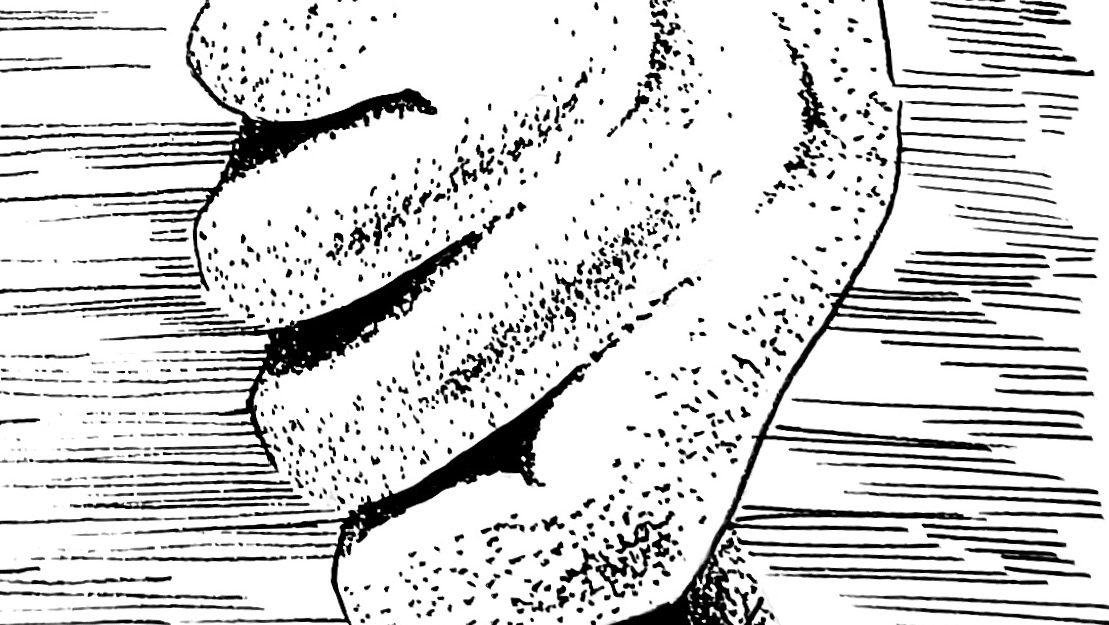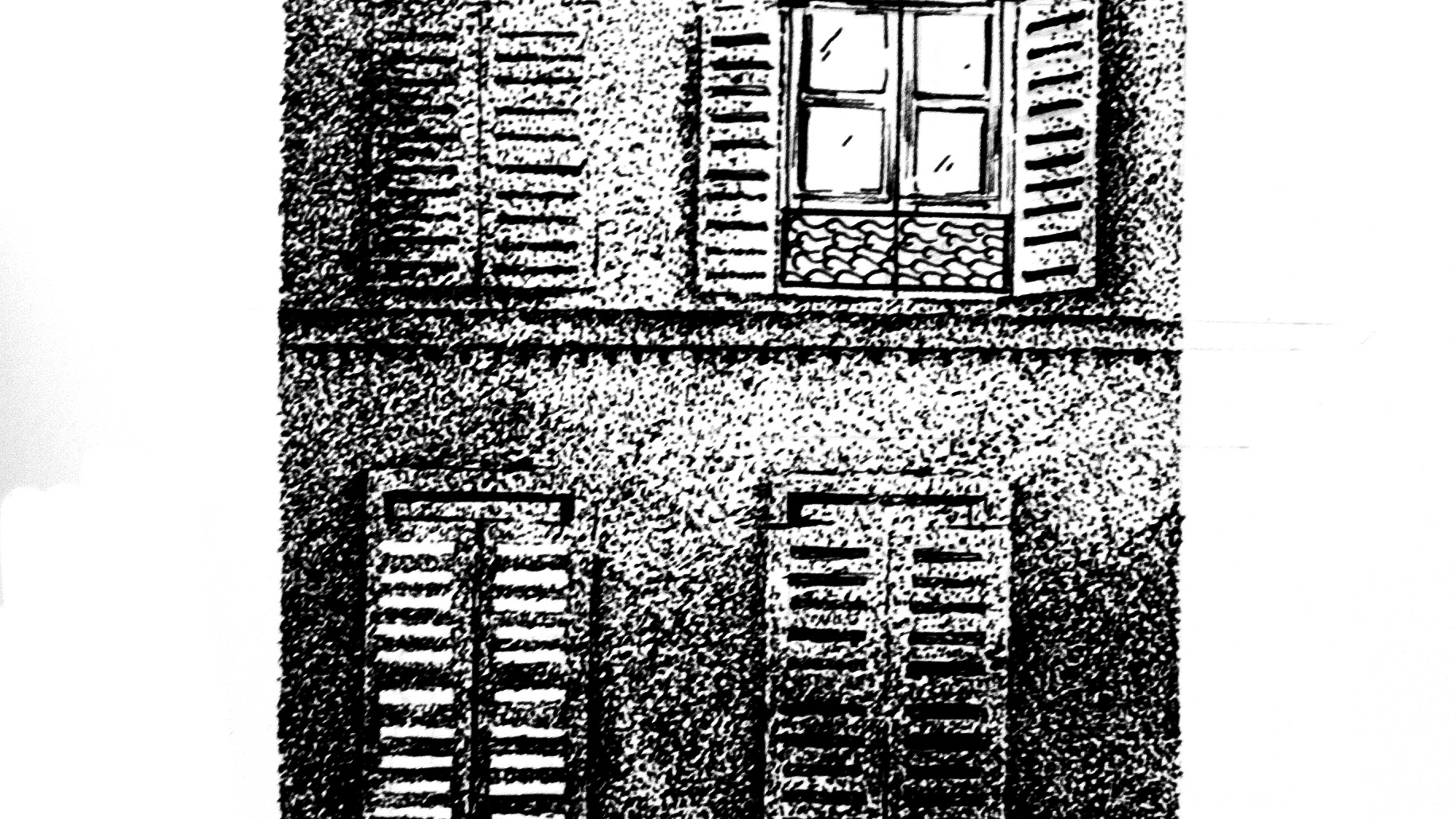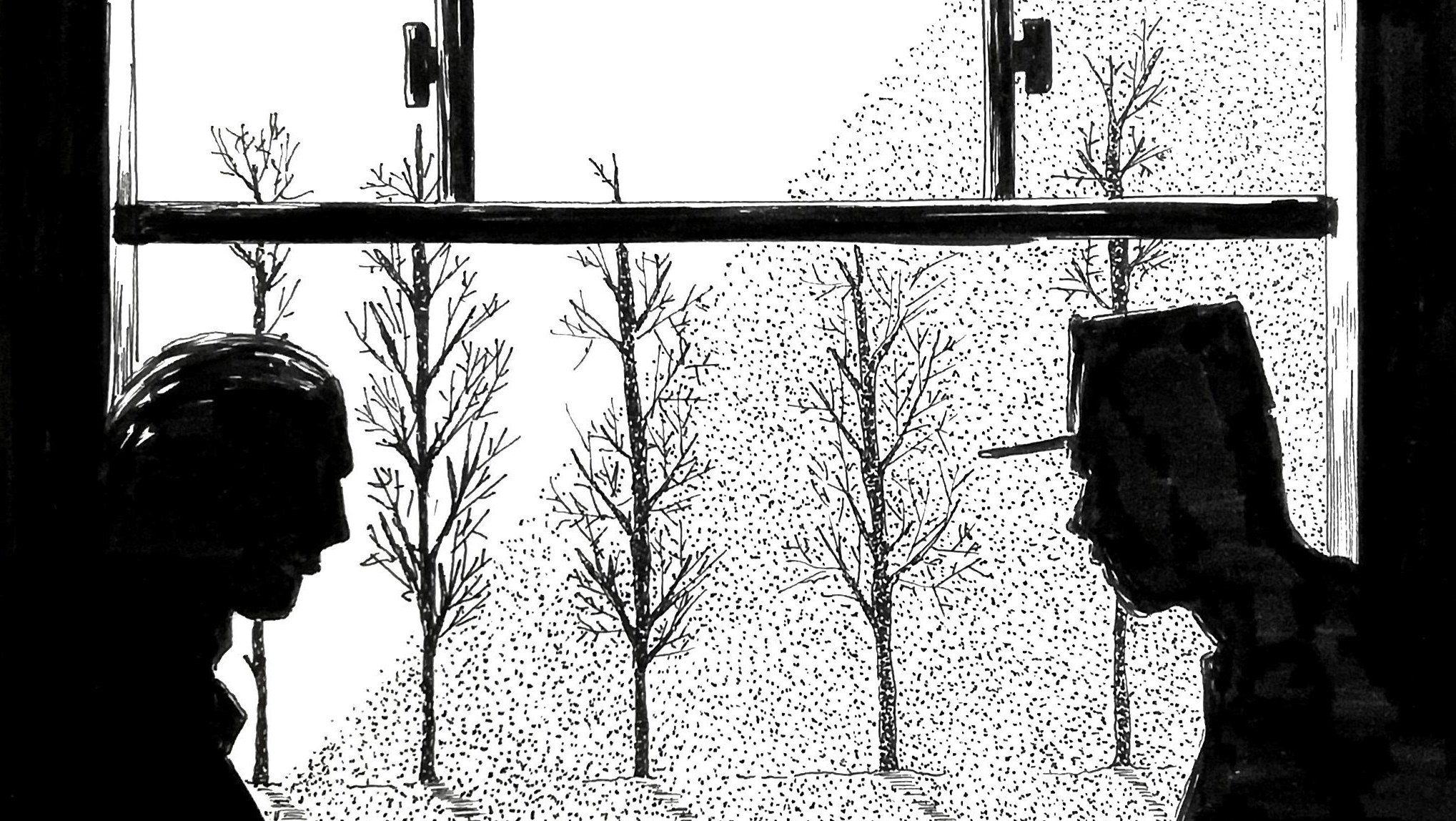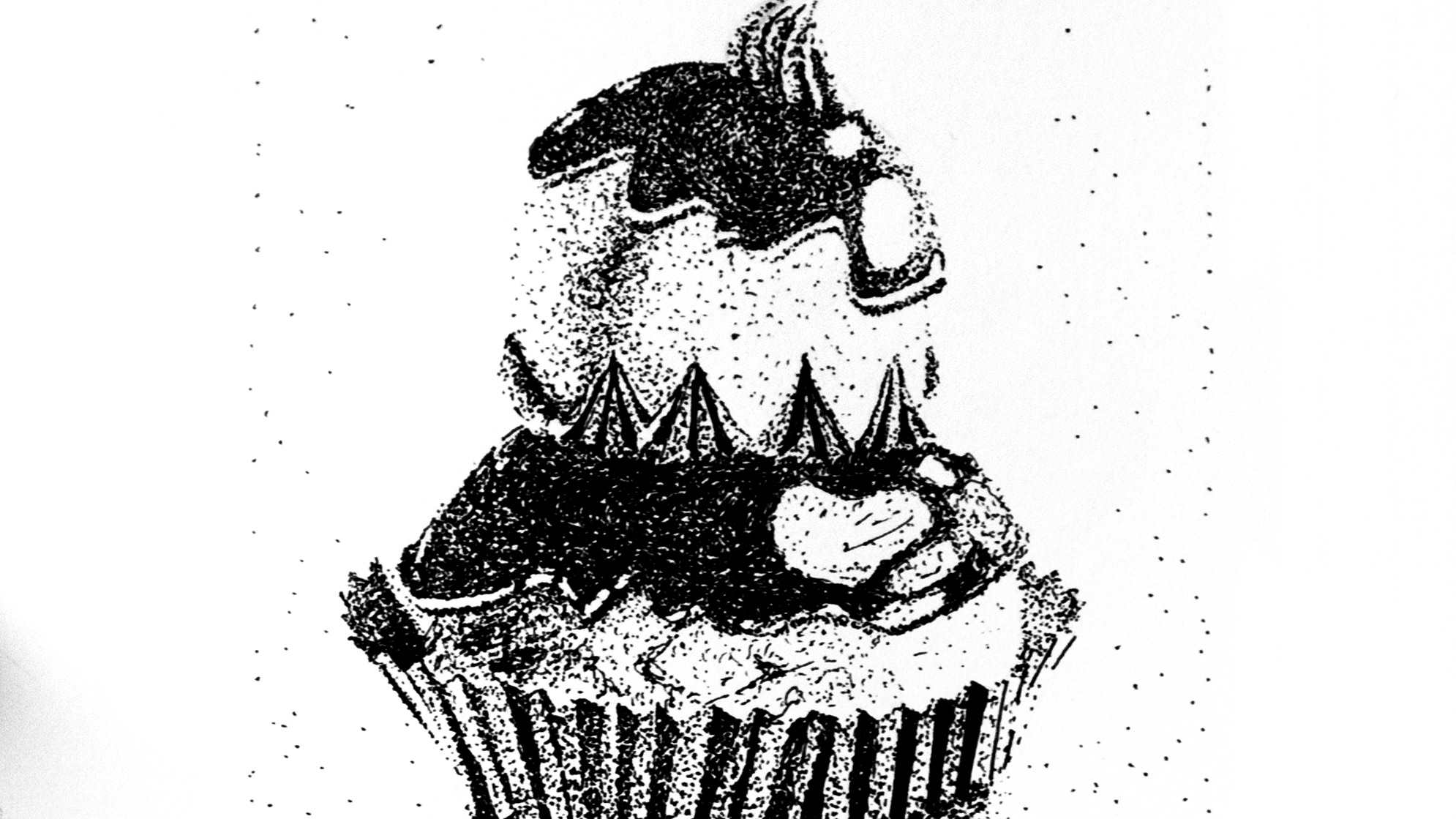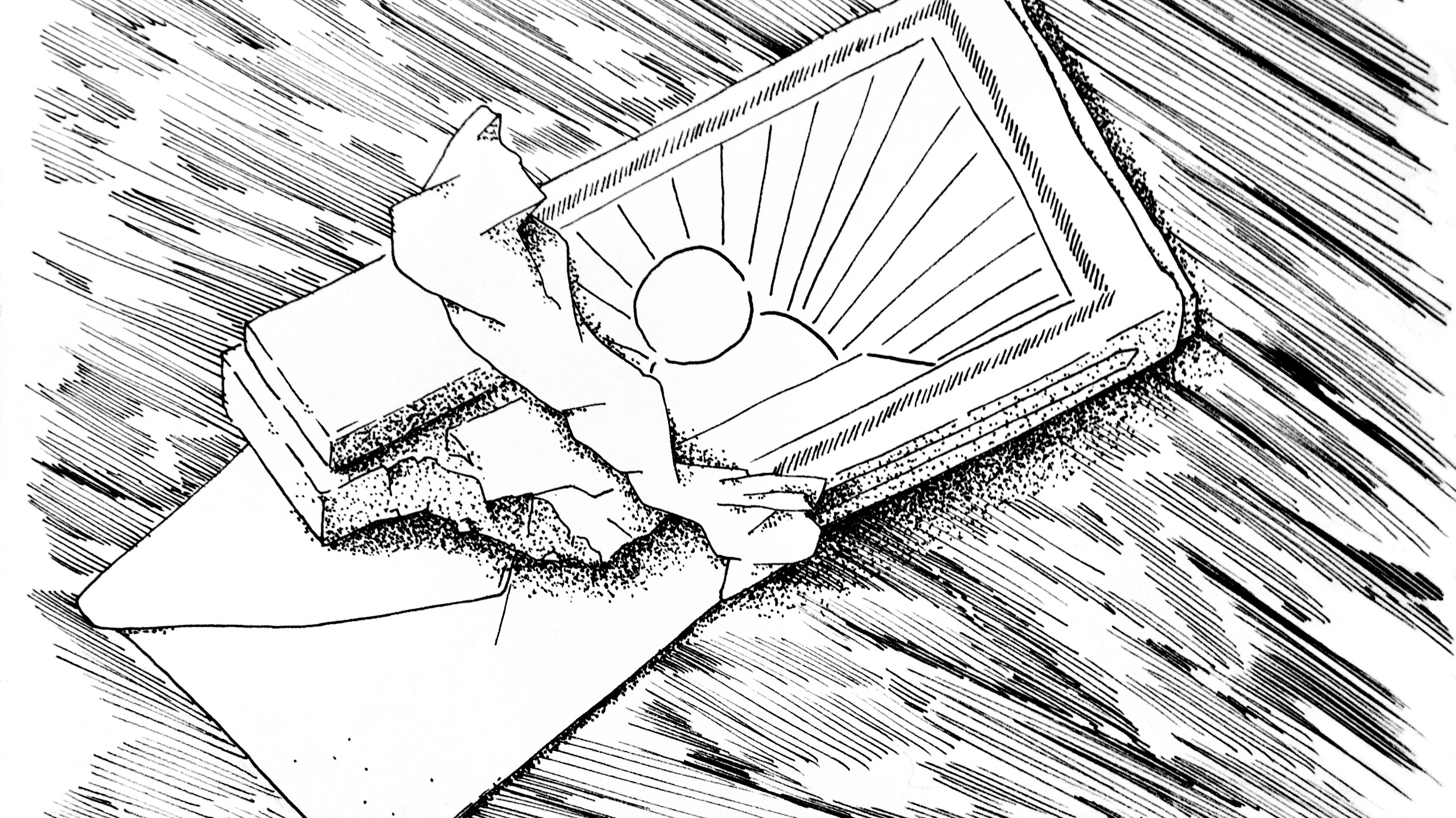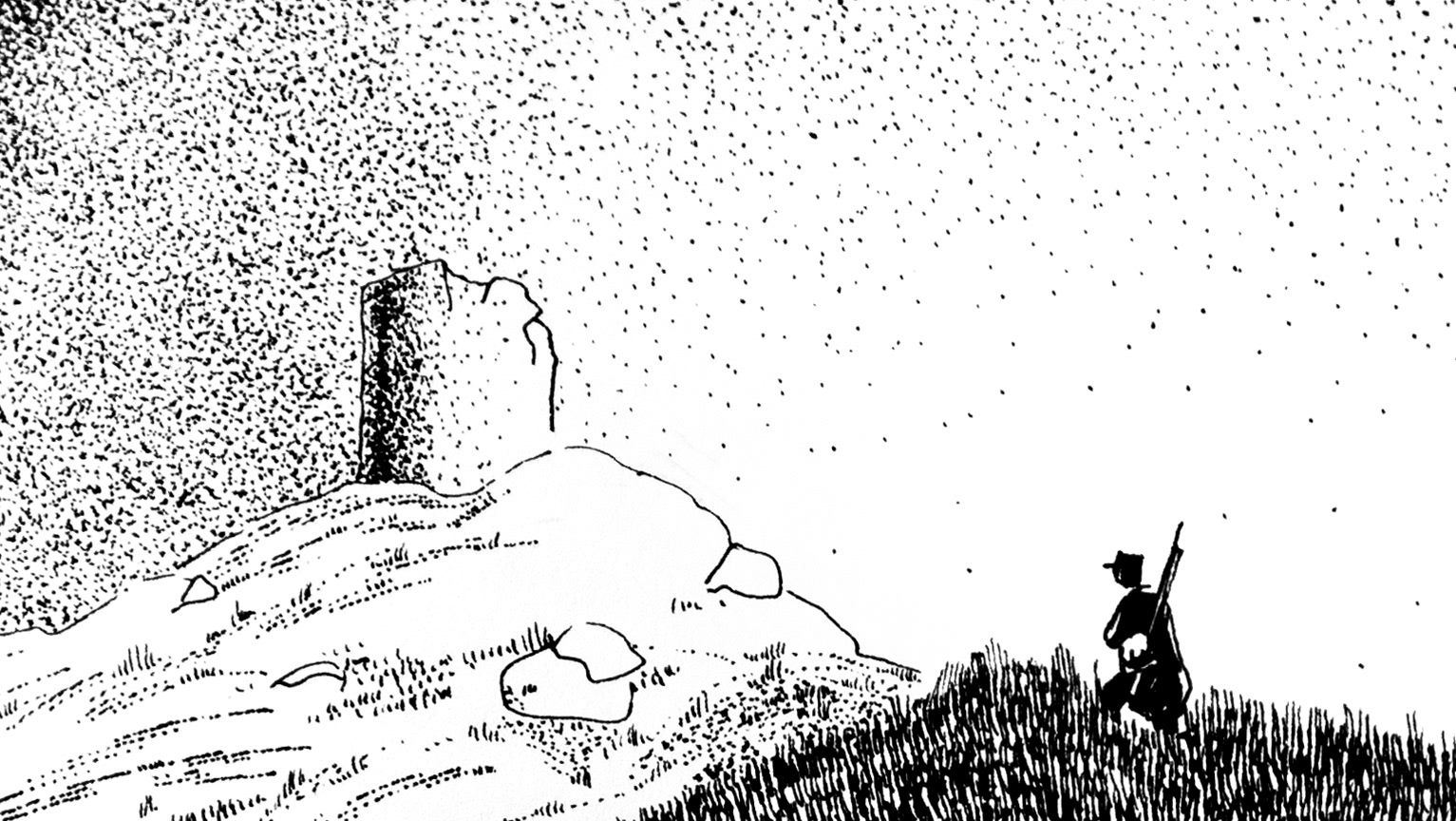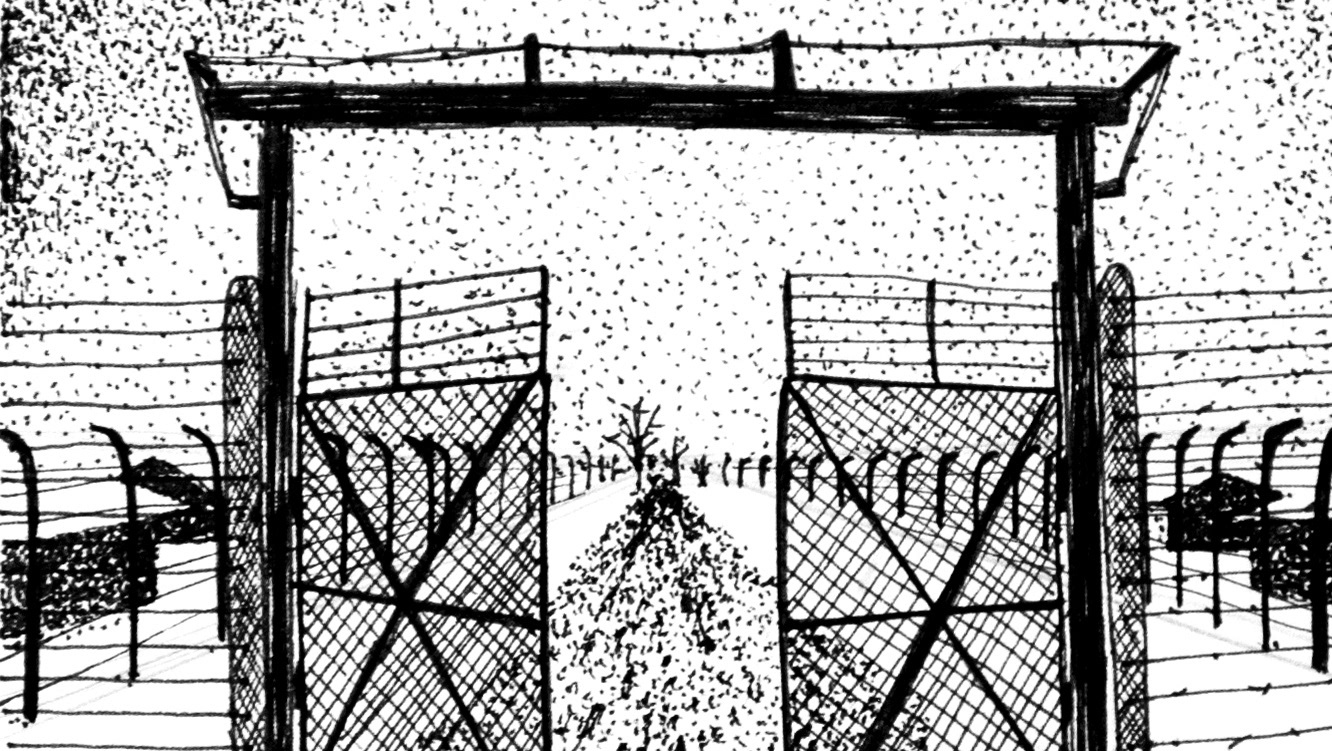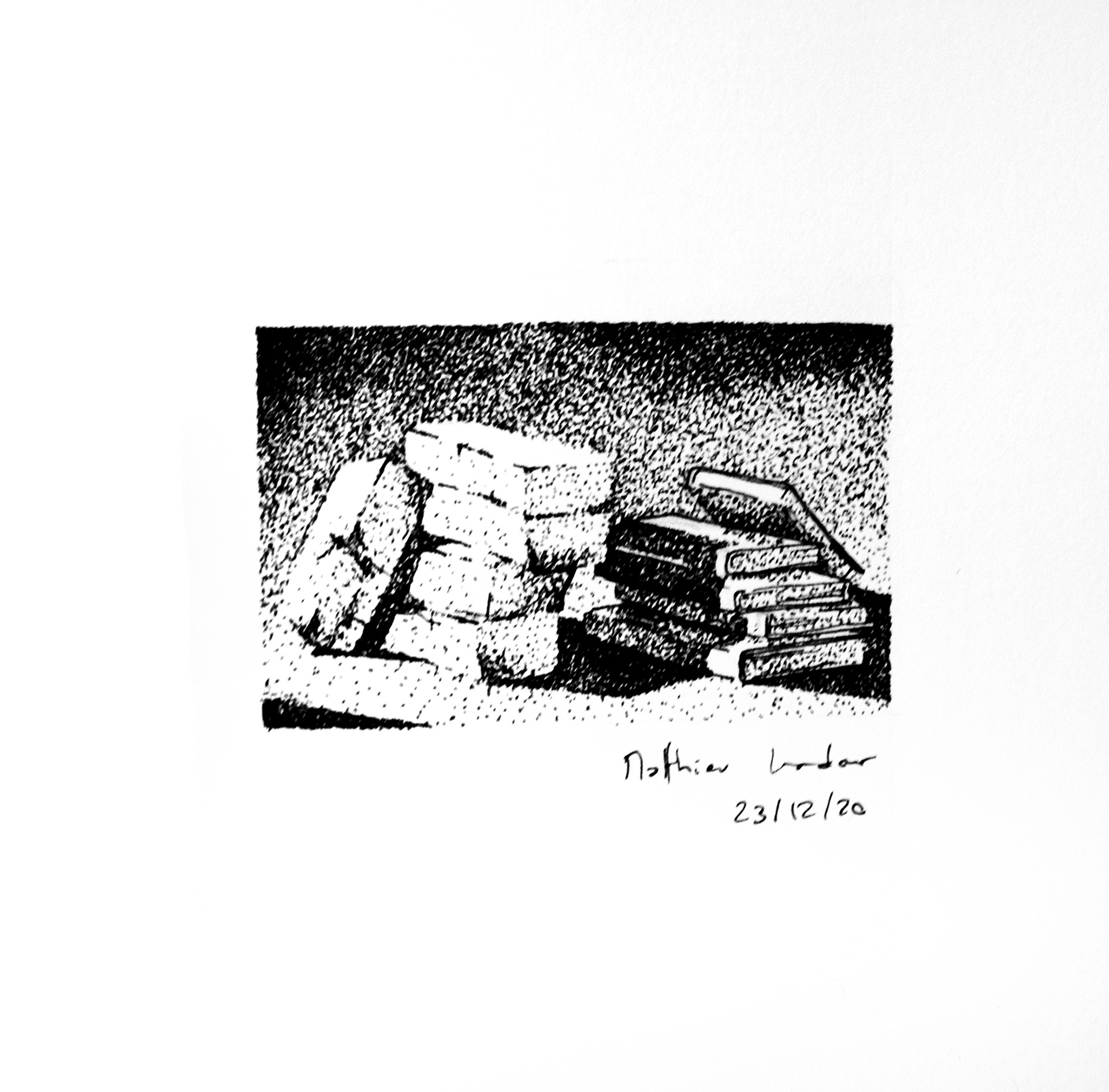
the books and the bricks
Today is a day in early March 1943, and Yvonne Picard works on a construction kommando, a very demanding and tiring kommando. She carries bricks like she carries books, 2 at a time, against her chest, as if she is hurrying to leave the library before closing time.
Yvonne, Charlotte, Mai, Viva and Marie-Claude are a solid group amongst the 31000. They help each other, share their food, their bunks. But sometimes despair envelops one of them and takes her with it, never to release its deadly grasp. Despaired, you can't do anything anymore, work, eat, nothing is possible anymore.
Yvonne is exhausted, she has dysentery, every day is getting more and more difficult.
Back in late 1941, Yvonne was a promising woman with a philosophy license, she already gave classes to a school at only 21 years old. She was also part of the "Freedom and socialism" group, created by Simone De Beauvoir, her companion Jean-Paul Sartre, Jean Toussaint, Merleau-Ponti and Dominique Desanti. 50 people met from time to time, discussing the current events, the non aggression pact between Soviet Union and Germany, the occupation, how to bare it on a daily basis. Sartre and Beauvoir were convinced that writers of Europe should unite and write for freedom, so they went to visit 2 other writers, Andre Gide and Andre Malraux. It was a disappointment. Neither Gide or Malraux were ready to start their fight, they had their own fights going on. Soon after, a few members were arrested, the others stopped meeting, "freedom and socialism" ended.
Yvonne didn't stop thinking about that fight, what it meant, what she should be doing. Beauvoir and Sartre thought they should fight with their work, with their writing, Yvonne decided to fight by spreading those words, and more words, more works. She would fight with tracts.
Tracts needed to be written, printed in large numbers, you needed a great deal of material, typewriters, papers, roneos,... It was a consequent illegal industry. And the police was looking, studying, making notes, like a shadow lurking in the corner.
Yvonne wasn't followed, but Ambroise was. Ambroise was the nickname the police gave to Tintelin, as they first noticed him exchanging packets on Saint Ambroise street in Paris. There was no need to arrest him right away, just looking at him and making notes about who he was meeting was a far more promising technique. They followed him meeting with Jacqueline Quatremaire, with Mado, with Carmen, Lulu. When Ambroise realised he was being followed, it was already too late. The police arrested everyone, printers, typesetters, distributors, liaison officers, 2 presses, clandestine material,... As for Yvonne, her name was written on a piece of paper in a flat, the police came to his father, a well known archeologist and teacher at the Sorbonne. He had no idea his daughter was a resistant, he gave the police her address, never realising what this would mean for her.
For 6 months, her father did everything he could to have her released, using all the relations he had, but it was too late. Yvonne was deported with all the women from the Tintelin networks, the men were executed, Yvonne wasn't even given an opportunity to say goodbye to her companion Gaston Etievent, he was shot with 88 other men, without any trial. 13 of those men were husbands of the 31000.
Back to the present, Yvonne carries bricks against her chest. Those aren't books but bricks, as much as Yvonne wishes the opposite. Now she joins the revier, she can't carry anything anymore, she can't imagine anything anymore, she can't imagine leaving this place alive. Her friends try to tell her otherwise, but they are so weak themselves, there is so little they can do. Once caught, getting rid of despair is difficult.
Notes
Thank you for listening to this episode of 31000/45000, the story of 2 trains of french members of the resistance. My name is Matthieu Landour Engel.
This episode was about Yvonne Picard
The brick kommando, or Abbruch Kommando, was a unit of women assigned to demolishing houses of evicted Poles from the area around the camp. The women barely had tools, they had pickaxes and poles, nothing more, and they generally didn't have any building structure knowledge so on top of being tiring, it could be dangerous kommando. For example, when demolishing a house, walls could fall on the wrong side, causing injuries or death. The Abbruch Kommando sometimes also consisted of smoothing roads, digging ditches, … I got those informations from the museum of Auschwitz, who kindly explained to me about this Kommando, as I was struggling to get information.
Here is what's known about the kommandos in general. In winter, prisoners usually woke up at 5.30, had little time for hygiene before taking hot infused water, roughly referred as coffee. Then the roll call would start and could take hours, depending on many elements. Kommandos would begin afterwards, with a pause between 12 and 1pm. Working days lasted roughly 11 hours, before nightfall. Then, the prisoners would be counted once more and then would receive their evening meal, which I will get back to in another episode. Sometimes, prisoners had some free time before the call to sleep, allowing them to talk or attempt to wash or clean up, somehow, given the lack of water. At 9pm, everyone would go back to their blocks, the camp would go silent.
Sundays were not work days, prisoners would generally rest.
Hygiene wise, there is no easy way to explain this, but it was difficult to go to the restrooms after 9pm. Doing this would generally wake up the block leader and lead to violence. So there was only a few options, which were to either relieve yourself in your own clothes or use your own tin. most prisoners therefore used their tins for more than eating, and they didn’t really have a choice. This also explains why dysentery quickly spread up in the camp.
Yvonne Picard did not survive, she caught dysentery quickly and died at the Revier.
I have been trying to find Yvonne Picard’s relatives, unfortunately, my research was unsuccessful. If by any chance, you know of someone related to her please let me know, I would be very pleased to get in touch and make sure the text I wrote doesn’t contain any errors.
The group “ Socialism and freedom”, created by Simone De Beauvoir and Jean-Paul Sartre was not a resistance group, it was more of a literary meeting organisation, yet it did start a resistance consciousness in many of its members, including Yvonne Picard. Jean-Paul Sartre was considered a hero of the resistance at the end of WW2, which is not really the case, as he mostly kept to himself and wrote plays. Jean-Paul Sartre didn’t really participate in the resistance before august 1944, although his voice, his writing may be considered of resistance spirit.
My sources for this story are mostly coming from the book le convoi du 24 janvier by Charlotte Delbo, also A train in winter by Caroline Moorehead. My sources also are red triangles in Auschwitz, by Claudine Cardon Hamet, the website deportes-politiques-auschwitz.fr, memoire vive and the foundation for the memory of deportation website and the fantastic website auschwitz.org .
Thank you very much for listening, the next episode will be about Marcelle Fuglesang and the geneva convention.
TRADUCTION FRANCAISE
Aujourd’hui, un jour de Mars 1943, Yvonne Picard travaille dans un kommando de construction. Sa tâche est répétitive et épuisante, elle transporte des briques, toute la journée. Elle porte ses briques comme elle tient des livres, 2 briques l’une sur l’autre, contre sa poitrine, le dos courbé en arrière, elle court comme si elle se pressait de quitter sa librairie avant la fermeture.
Yvonne, Charlotte, Mai, Viva et Marie-Claude sont un groupe très soudé parmi les 31000. Elles s’aident, partagent leurs rations, leur couchette. Mais parfois cela ne suffit pas, et le désespoir enveloppe l’une d’elles, sans plus lâcher prise. Il n’y a plus rien a faire, on ne veut plus rien, ni travailler, ni manger, rien n’est plus possible.
Yvonne est à bout, elle a la dysenterie.
Plus tôt, en 1941, Yvonne était une jeune femme pleine de promesses. A seulement 21 ans, elle avait sa licence de philosophie et donnait des cours. Elle faisait aussi partie du groupe “ liberté et socialisme”, animé par Simone De Beauvoir, son compagnon Jean-Paul Sartre, Jean Toussaint, Merleau-Ponti et Dominique Desanti. De temps à autre, une cinquantaine de membres se réunissaient et débattaient des événements, du pacte de non agression germano-soviétique, de l’occupation, du rationnement. Sartre et De Beauvoir étaient convaincus que les écrivains européens devaient s’unir, alors ils rencontraient André Gide et André Malraux, dans l’espoir de les convaincre de les rejoindre. Ce fut un échec, ni Gide ni Malraux n’acceptaient, trop accaparés par leurs propres problèmes. Peu de temps après, la motivation s'émoussait, les premiers membres étaient arrêtés dans des événements séparés, les meetings s'espaçaient, “liberté et socialisme” prenait fin.
C'était le début pour Yvonne, le départ de son engagement. Beauvoir et Sartre pensaient qu’ils pouvaient résister avec leurs mots, Yvonne pensait résister en partageant ces mots, en les faisant circuler, plus de mots, plus de travaux. Elle résistait avec des tracts.
Les tracts devaient être écrits, il fallait les imprimer en larges nombres, il fallait du matériel, des machines à écrire, du papier, des ronéotypes, … C'était une mini industrie, et il fallait qu'elle reste souterraine, car la police n'était pas loin, elle suivait, elle guettait, comme une ombre tapie dans un coin.
Yvonne n'était pas suivie, mais Ambroise l'était. Ambroise était le surnom donné par la police à Tintelin, qu’ils avaient repéré en train d'échanger des paquets dans la rue Saint Ambroise à Paris. Les policiers français n'étaient pas pressés, ils ont préféré continuer de le surveiller, ainsi que chaque nouvelle personne qu’il rencontrait, c'était bien plus efficace que de l'arrêter de suite. Ils ont découvert l’existence de Jacqueline Quatremaire, de Mado, Carmen, Lulu, et bien d’autres. Lorsque Ambroise s'était rendu compte qu’il était suivi, c'était déjà trop tard. La police lançait son coup de filet et appréhendait des imprimeurs, des distributeurs, des officiers de liaison, de presses, du matériel clandestin, l’opération était un énorme succès. Quant à Yvonne, son nom était écrit sur un papier, dans une chambre. La police s'était rendue chez son père, un archéologue de renom et professeur à la Sorbonne. Lui-même n’avait aucune idée que sa fille était une résistante, les policiers étaient polis, il a simplement donné son adresse, sans prendre conscience de ce que cela signifiait pour elle. Comment aurait-il pu?
Pendant 6 mois, son père avait tout fait pour faire relâcher Yvonne, il épuisait toutes ses relations, mais il n’y avait rien a faire. Yvonne était déportée avec toutes les autres femmes de l’affaire Tintelin, les hommes étaient tous exécutés, Yvonne n’avait pas pu dire adieu à son compagnon Gaston Etievent, il était abattu lui aussi, avec 88 autres hommes, dont 12 maris des 31000, sans procès.
De retour au présent, Yvonne porte 2 briques contre sa poitrine. Elle imagine que ce sont des livres, pour la dernière fois. La journée terminée, Yvonne passe l’appel, ses amies voient bien qu’elle n’en peut plus, elle ne peut plus porter quoi que ce soit, elle ne peut même plus imaginer quoi que ce soit. Ses amies tentent de l’en dissuader, mais elle rejoint le revier. Une fois qu’on perd l’espoir, le retrouver est si difficile,
Yvonne disparaît, dans la nuit et le brouillard.
notes
Thank you for listening to this episode of 31000/45000, the story of 2 trains of french members of the resistance. My name is Matthieu Landour Engel.
This episode was about Yvonne Picard
The brick kommando, or Abbruch Kommando, was a unit of women assigned to demolishing houses of evicted Poles from the area around the camp. The women barely had tools, they had pickaxes and poles, nothing more, and they generally didn't have any building structure knowledge so on top of being tiring, it could be dangerous kommando. For example, when demolishing a house, walls could fall on the wrong side, causing injuries or death. The Abbruch Kommando sometimes also consisted of smoothing roads, digging ditches, … I got those informations from the museum of Auschwitz, who kindly explained to me about this Kommando, as I was struggling to get information.
Here is what's known about the kommandos in general. In winter, prisoners usually woke up at 5.30, had little time for hygiene before taking hot infused water, roughly referred as coffee. Then the roll call would start and could take hours, depending on many elements. Kommandos would begin afterwards, with a pause between 12 and 1pm. Working days lasted roughly 11 hours, before nightfall. Then, the prisoners would be counted once more and then would receive their evening meal, which I will get back to in another episode. Sometimes, prisoners had some free time before the call to sleep, allowing them to talk or attempt to wash or clean up, somehow, given the lack of water. At 9pm, everyone would go back to their blocks, the camp would go silent.
Sundays were not work days, prisoners would generally rest.
Hygiene wise, there is no easy way to explain this, but it was difficult to go to the restrooms after 9pm. Doing this would generally wake up the block leader and lead to violence. So there was only a few options, which were to either relieve yourself in your own clothes or use your own tin. most prisoners therefore used their tins for more than eating, and they didn’t really have a choice. This also explains why dysentery quickly spread up in the camp.
Yvonne Picard did not survive, she caught dysentery quickly and died at the Revier.
The group “ Socialism and freedom”, created by Simone De Beauvoir and Jean-Paul Sartre was not a resistance group, it was more of a literary meeting organisation, yet it did start a resistance consciousness in many of its members, including Yvonne Picard. Jean-Paul Sartre was considered a hero of the resistance at the end of WW2, which is not really the case, as he mostly kept to himself and wrote plays. Jean-Paul Sartre didn’t really participate in the resistance before august 1944, although his voice, his writing may be considered of resistance spirit.
My sources for this story are mostly coming from the book le convoi du 24 janvier by Charlotte Delbo, also A train in winter by Caroline Moorehead. My sources also are red triangles in Auschwitz, by Claudine Cardon Hamet, the website deportes-politiques-auschwitz.fr, memoire vive and the foundation for the memory of deportation website and the fantastic website auschwitz.org .
Thank you very much for listening, the next episode will be about Marcelle Fuglesang and the geneva convention.
